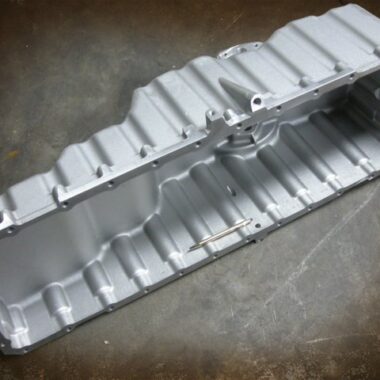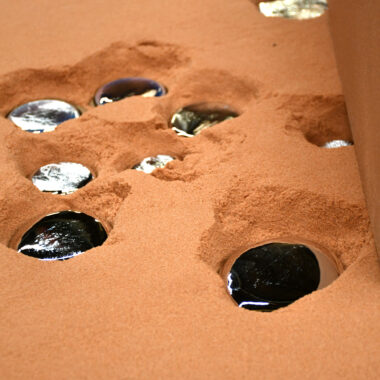Precision in Practice: The Art About Aluminum Casting
Precision in Practice: The Art About Aluminum Casting
Blog Article
Crafting Perfection: Exactly How to Achieve High-Quality Aluminum Castings Each Time
In the realm of aluminum spreading, the quest of perfection is a continual journey that calls for a meticulous strategy and an eager understanding of the ins and outs entailed. Attaining constant premium aluminum spreadings demands an extensive grasp of the procedures, from choosing the appropriate alloy to carrying out precise mold and mildew styles and meticulously regulating spreading specifications. The true proficiency lies in the capacity to carry out these elements effortlessly to create flawless spreadings every time. As we discover the ins and outs of crafting excellence in aluminum spreadings, discovering the key methods and strategies that result in impressive results comes to be paramount for those pursuing excellence in this specific area.
Understanding Aluminum Casting Processes
Aluminum casting procedures, essential in the manufacturing market, include the elaborate makeover of molten aluminum into solid forms with a collection of very carefully regulated actions. Understanding these processes is critical to achieving high-quality aluminum spreadings regularly - about aluminum casting. The primary techniques utilized in aluminum casting are pass away spreading, sand spreading, and financial investment casting

Each of these procedures has its benefits and is chosen based on elements like complexity, volume, and desired surface of the light weight aluminum casting. about aluminum casting. Comprehending the details of these techniques is vital for producers aiming to produce top quality aluminum spreadings continually
Selecting the Right Aluminum Alloy
Selecting the appropriate light weight aluminum alloy is an essential decision in the manufacturing of high-grade aluminum castings. When picking an aluminum alloy for spreading, it is essential to take into consideration the details demands of the application to guarantee optimum performance.
One of the most commonly used aluminum alloys for spreading is A356 - about aluminum casting. For applications requiring high toughness, 7075 light weight aluminum alloy is a popular choice due to its outstanding strength-to-weight ratio.
Along with mechanical buildings, considerations such as cost, availability, and post-casting procedures must likewise affect the selection of the appropriate light weight aluminum alloy. By thoroughly examining these variables, makers can make sure the manufacturing of high-grade light weight aluminum spreadings that meet the desired specifications.
Implementing Correct Mold Design
Developing an effective mold design is important for making sure the successful manufacturing of high-quality light weight aluminum spreadings. Appropriate mold design plays a significant role in attaining the wanted attributes of the end product. To execute a successful mold style, aspects such as material circulation, cooling down rates, and component geometry need to be very carefully thought about.
One trick facet of mold style is making sure appropriate filling and solidification of the light weight aluminum within the mold dental caries. This entails creating runner and gating systems that promote smooth steel circulation and avoid defects such as air entrapment or insufficient dental filling. Furthermore, incorporating cooling networks right into the mold layout aids regulate solidification prices and decrease the risk of porosity or contraction flaws.

Controlling Spreading Parameters

Guaranteeing Post-Casting Quality Checks
To keep the high top quality of light weight aluminum spreadings, complete post-casting high quality checks are important. After the spreading procedure is finished, it is vital to make sure that the last items fulfill the preferred specs and requirements.
Dimensional precision is one more critical facet visit our website that should be confirmed during post-casting quality checks. Dimensions of crucial measurements and resistances ought to be taken to validate that the spreadings satisfy the required requirements. Furthermore, mechanical properties such as firmness, tensile stamina, and influence resistance might need to be evaluated via material screening to guarantee that the spreadings have the required toughness and toughness for their intended application.
Verdict
To conclude, achieving top notch aluminum spreadings calls for a thorough understanding of the casting procedures, selecting the proper alloy, developing molds efficiently, managing spreading parameters thoroughly, and conducting post-casting top quality checks carefully. By adhering to these steps, makers can continually generate aluminum castings that satisfy the highest check these guys out possible criteria of high quality and efficiency.
Attaining regular premium light weight aluminum castings demands a comprehensive grasp of the processes, from selecting the suitable alloy to executing accurate mold designs and thoroughly regulating spreading specifications. The key methods used in aluminum casting are pass away spreading, sand spreading, and financial investment spreading.
Investment spreading, likewise understood as accuracy casting, check my blog entails creating wax patterns that are covered in ceramic to create mold and mildews.Choosing the appropriate aluminum alloy is a vital decision in the production of high-grade aluminum spreadings.Ensuring precise control over spreading parameters is vital for preserving consistency and top quality in aluminum spreading production.
Report this page